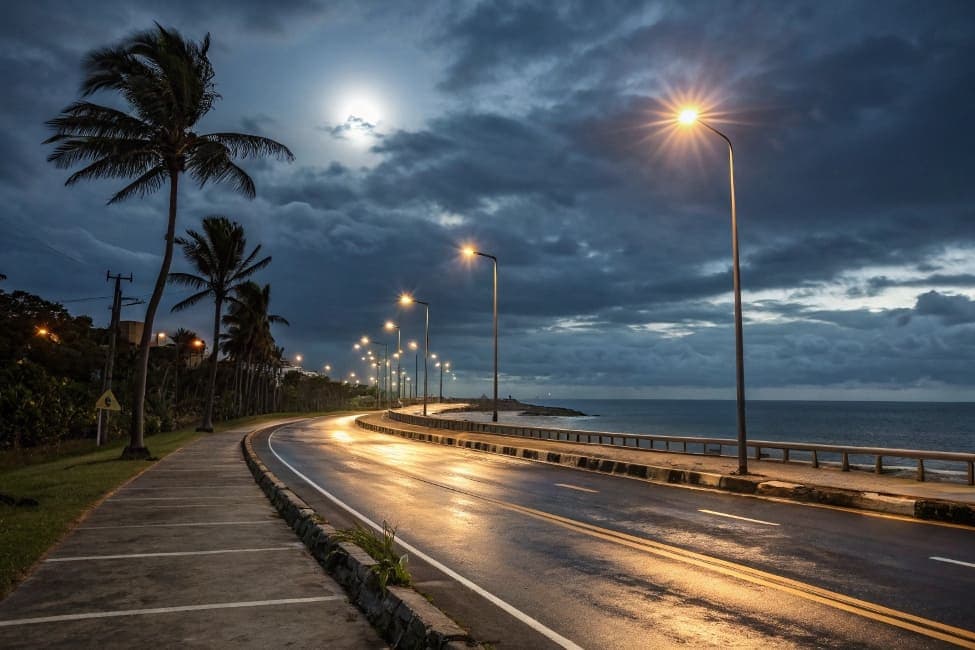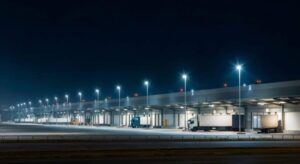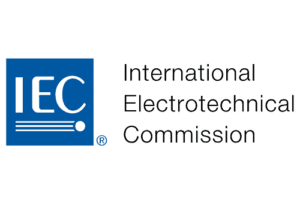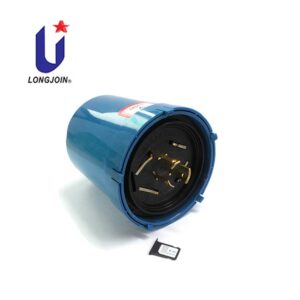JL-241J NEMA Receptacle Material Deep Dive: Why Modified PBT + Glass Fiber + UV Stabilizer Is the Real Coastal Shield
Introducir
Coastal outdoor lights face harsh weather. These are some of the world’s toughest conditions. Salt spray, strong sun, damp air, and high winds wear out equipment. It breaks down faster than in inland areas. Many engineers worry that a photocontrol receptacle or NEMA socket might fail early if it is made with “plain PBT.” That fear is valid — because ordinary PBT does break down.
But the Long-Join JL-241J does not use plain PBT at all. It uses a modified PBT blend reinforced with glass fiber and UV stabilizers, engineered to survive over ten years in harsh street lighting outdoor conditions.
This guide explains the material in a simple, clear way — every section is a question, followed by an answer you can understand, even if you’re not a materials engineer.
What Makes Coastal Environments So Tough on a NEMA Receptacle?
If you work on coastal highways or seaside walkways, you already know how fast equipment ages.
Salt spray comes from the sea. Tiny salt particles land on equipment all day. When the air gets humid, the salt melts into water. It forms a harsh chemical film.
That film attacks the plastic, speeding up cracks. UV light adds another layer of stress, breaking the chemical bonds inside ordinary PBT resin. Over time, plain PBT starts to turn yellow, then white, then chalky. Finally, it becomes brittle.
That is why many engineers have doubts when they hear the phrase “PBT housing.” They wonder, “Will it last out here?”
With Long-Join’s modified formula, the answer is yes.
Is JL-241J Made From “Plain PBT” Like Some Clients Fear?
Many procurement teams ask this question right away, especially for coastal projects. They want to confirm whether JL-241J uses standard PBT or an upgraded version.
Here is the simple answer:
JL-241J does NOT use plain PBT. It uses modified PBT with glass fiber and UV stabilizer.
To show this in a clear way, here’s the comparison:
Artículo | Plain PBT | Long-Join JL-241J |
Base Resin | Standard PBT | Modified PBT blend |
Reinforcement | Ninguno | 20–30% Glass Fiber |
Weathering Additives | Ninguno | UV Absorbers + Antioxidants |
Salt Spray Aging | Débil | 1000h NSS, no cracks |
UL94 Rating | V0 | V0, self-extinguish <10s |
The client’s fear usually comes from past products they used. But the JL-241J is already engineered for photocontrol and photocell for street light applications in seaside cities like Xiamen, Sanya, and Dubai.
Why Does Plain PBT Fail So Quickly Near the Sea?
This question comes up often. Engineers want to understand the science behind material failure.
Plain PBT starts to degrade for three main reasons:
- UV rays break the ester bonds in the resin
- Salt spray attracts moisture, promoting stress cracks
- Mechanical fatigue weakens the structure over time
When these forces work together, the PBT loses its shine. It yellows, turns chalky, and cracks.
The JL-241J is modified to stop these failures before they begin.
How Does Modified PBT + Glass Fiber Improve Longevity?
Modified PBT is not just a cosmetic upgrade. Each added component solves a specific environmental challenge.
• Glass Fiber Reinforcement
Glass fiber strengthens the structure and makes the housing more rigid. It supports the load of the photocell, protects the electrical pins, and helps the receptacle resist cracking under wind vibration.
• UV Stabilizers
Long-Join uses benzotriazole-type UV absorbers. They soak up UV rays. They turn them into safe heat. Without them, sunlight harms the resin. It fails within a few months.
• Antioxidants
These slow down aging from oxygen and heat. They also prevent the surface from turning chalky.
• Hydrophobic Coating
Once applied, salt cannot easily stick to the surface. This reduces stress cracking during thermal cycles.
When you put all these enhancements together, you get a coastal-grade housing that stays stable for years.
What Do Extreme Lab Tests Reveal About JL-241J?
Long-Join performs strict internal testing before releasing any receptacle. These tests copy real coastal conditions. They use photocell and receptacle pairs.
Here is a summary of the test results:
Test | Conditions | Results |
UV Aging | 2000h QUV UVA-340 | ΔE<2 (minimal color change) |
Niebla salina | NSS 1000h | No cracking, no chalking |
Thermal-Humidity Cycling | 85°C / 85%RH → -40°C | Stable, no seal failure |
Field Test | 5 years on Xiamen Seawall | No visible degradation |
For comparison, plain PBT starts chalking and losing color after only 500 hours of UV exposure.
Why Is Modified PBT Necessary for Coastal Street Lighting?
If you install photocell lighting, street lighting outdoor equipment, or photocontrol receptacles near the seaside, ordinary plastics simply won’t last.
Let’s break down each environmental factor:
UV Exposure
The sun slowly eats into plain PBT. Modified PBT uses UV absorbers to keep the housing stable even after years of sunlight.
Niebla salina
Chloride ions cause stress cracking. Reinforced PBT resists this chemical attack.
High Humidity
Moisture enters weak plastics. Modified PBT includes antioxidants and a tighter molecular structure to stop swelling.
Strong Winds
Coastal winds shake the poles. Glass fiber reinforcement keeps the housing solid when vibration would normally cause damage. light control base material feature Glass fiber boosts Tensile strength >120MPa.
In short, the environment demands a stronger material, and modified PBT is that solution.

How Do JL-241J Series Models Compare?
Long-Join makes several versions of the JL-241J for different street lighting systems.
Modelo | Patas | Material | Clasificación IP | Caso de uso |
JL-241J-3P | 3-pin | Modified PBT + GF + UV | IP65 | Basic street lights |
JL-241J-7P | 7 pines | Same above | IP65 | Smart lighting |
JL-241J-Uni | Universal | PC + UV | IP66 | High-corrosion sites |
If a client needs even stronger protection, Long-Join offers nano-ceramic coating that pushes salt spray resistance to 2000 hours.
How Does JL-241J Fit Into Long-Join’s Full Photocell Portfolio?
Clients often want one supplier for everything: photocell, photocell switch, photocontrol, Zhaga socket, and Receptáculo NEMA. Long-Join provides exactly that.
JL-3 Series – Screw-In Photocell
Simple automation using a light photocell sensor.
Modelo | Socket | Max Load | Tamaño | Sensor |
JL-301A | E26 | 150 W | 36.6×68 mm | CdS |
JL-302 | E26/E27 | 150 W | 86×94 mm | CdS |
JL-303 | E26/E27 | 150 W | 40.5×78 mm | CdS |
JL-1 Series – Wire-In Photocell
Great for doorways, corridors, and smaller outdoor spaces.
JL-2 Series – Twist-Lock Photocontrol
UL773 and ANSI standards for photocell street light control.
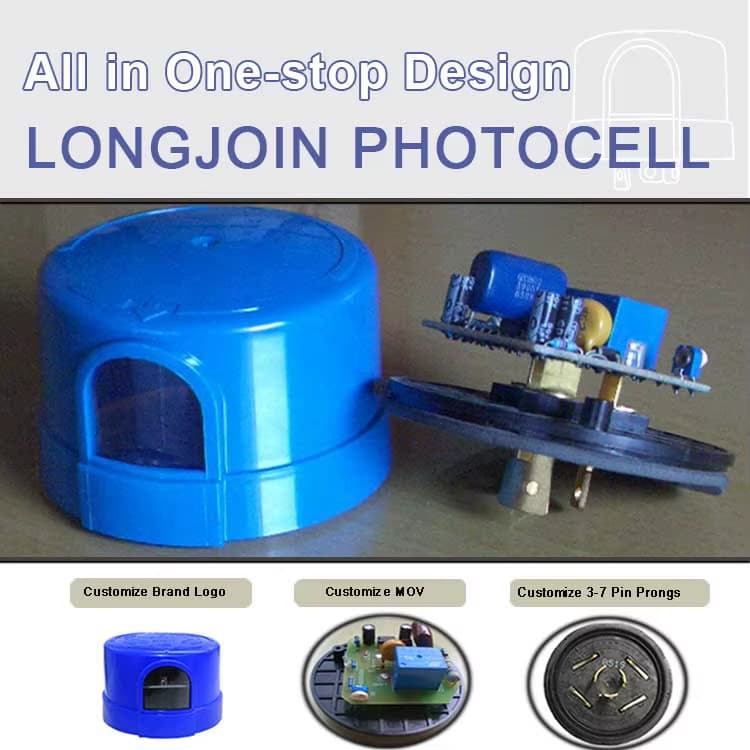
JL-7 Series – Zhaga Smart Control
Compacto Zócalo Zhaga for smart lighting. With the JL-241J receptacle, clients get a dependable interface for each controller.
How Can Engineers Validate Material Quality Before Procurement?
You only need three steps:
Step 1: Request Documentation
Ask for the MSDS, UL Yellow Card, RoHS test, and full material spec. Long-Join provides everything on request.
Step 2: Pilot Batch Testing
Deploy a small quantity near the project site for 1–3 months. Long-Join also offers free accelerated aging tests.
Step 3: Update the Project Specification
Write: “Modified PBT, glass fiber ≥20%, UV stabilizer ≥1%.” This ensures vendors match Long-Join’s quality level.
What Real Coastal Projects Have Proven JL-241J’s Performance?
Here are verified deployments:
- Xiamen Ring Road— 5 years, no failures
- Sanya Coastal Highway— survived tropical salt spray
- Dubai Marina Roadway— handled UV + sand + sea wind
These map directly to the toughest global lighting conditions.
Conclusión
Coastal lighting is not forgiving, and plain PBT cannot survive it. That’s why the JL-241J uses a reinforced material recipe built for UV, salt spray, humidity, and long-term mechanical stress. Modified PBT with glass fiber and UV stabilizer gives engineers confidence that their fotocontrol y célula fotoeléctrica hardware will stand strong for over a decade.
For any seaside project, JL-241J is the safer, longer-lasting choice.
Enlaces externos:
●https://www.sciencedirect.com/science/article/abs/pii/S0165993623002571
●https://www.zgsm-china.com/blog/nema-vs-zhaga.html
●https://support.nlm.nih.gov/kbArticle/?pn=KA-03976
●https://www.ul.com/services/ul-solutions-yellow-card-plastics-recognition-program
●https://support.nlm.nih.gov/kbArticle/?pn=KA-03976

